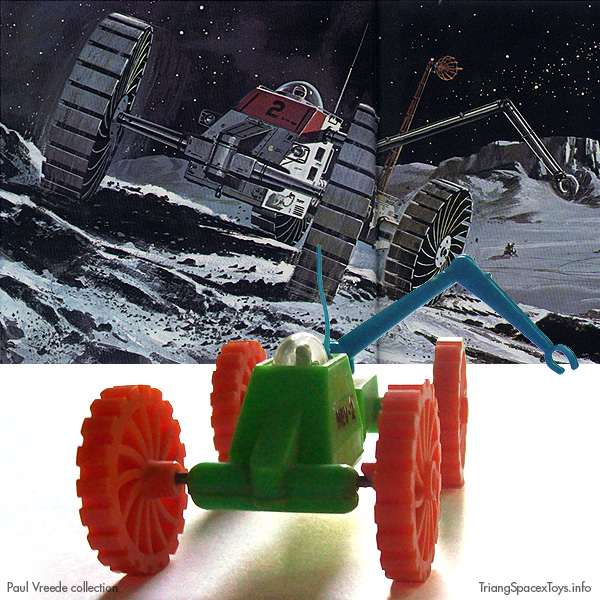
The Explorer MEV-2 is clearly one of the Spacex toys based on an illustration by Ed Valigursky from the Man and Space book published by Life in 1962. The general shape and details like wheels, front suspension and antenna are very well represented, the only real difference being that the Spacex toy has its arm placed in a much more practical location.
For the time being, that's about as far as I've got with this design. However, there's a good chance Ed Valigursky didn't entirely invent this vehicle himself, but may have based his illustration on something more definite being considered in the early sixties. Some of his other illustrations in the Man and Space book were, so why not this one.
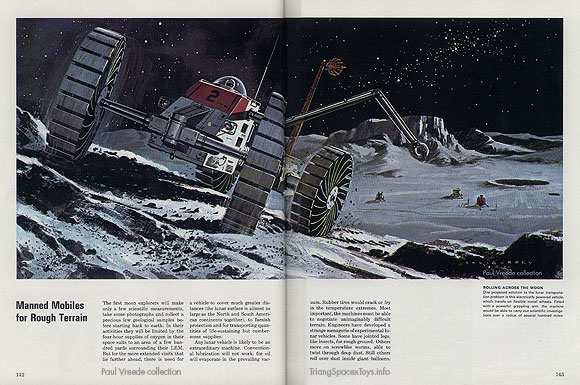
Valigurski Illustration in Man and Space book - click for readable view in new window (*)
My first contender would be Grumman Corporation, because of the wheel design with its distinctive spiraling spokes (Grumman called them 'metalastic' wheels, apparently). Grumman engineer Edward G Markow presented a wheel with these very same spokes in a paper to the Institute of the Aerospace Sciences in June 1962(1), and a year later applied for and was granted US Utility Patent 3182705 for the design as well (followed later by another patent for the wheels on the Grumman MTA).
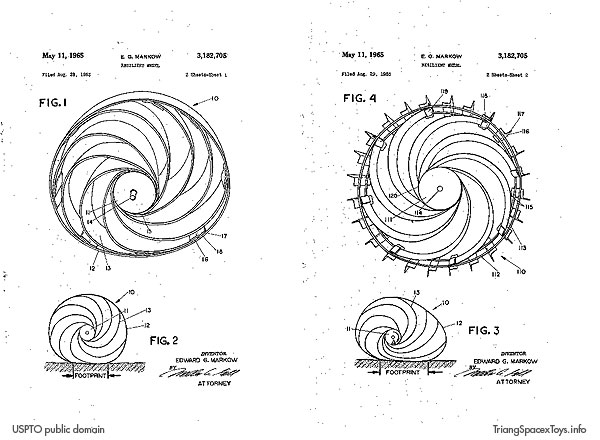
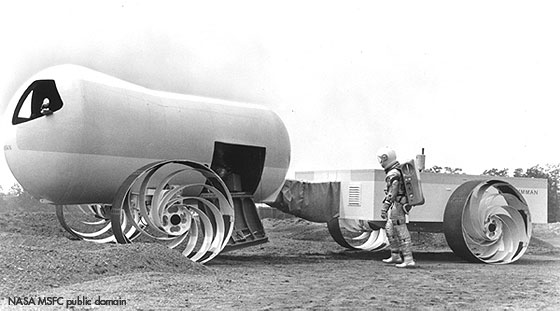
The metalastic wheels were extensively tested on Grumman's MoLab test vehicle in 1964 (above), which consisted of two distinct body components linked together by a hinged centre. As it happens, the Spacex MEV-2 also has a distinct front and rear section, large at the front and low at the rear, with a thinner central piece connecting them. This central piece is ribbed, which might just represent a flexible cover similar to that seen in the MoLab picture above. (2)
Cinematic cousin
The Valigurski illustration inspired another fictional lunar vehicle: the Moon Buggy featured in the James Bond film Diamonds Are Forever, first screened in December 1971.(3) Although at first glance the resemblance isn't that obvious perhaps, the general idea is certainly there. As Robert Yowell pointed out to me, it's got the same tall-front, low-rear proportions and the same details of bubble dome, arms and antenna. The clincher is the sketch for the 007 vehicle made by production designer Ken Adams. This clearly proves Mr Adams had done his research on moon vehicles, showing essentially Valigursky's vehicle running on Grumman MTA wheels. The film vehicle originally had these too, but ended up with sturdy rubber tyres before filming began. Toy-wise, the Bond Moon Buggy was immortalised by Corgi Toys in 1972, initially in bright colours but later reissued in a more prototypical silver colour for the 25th anniversary.
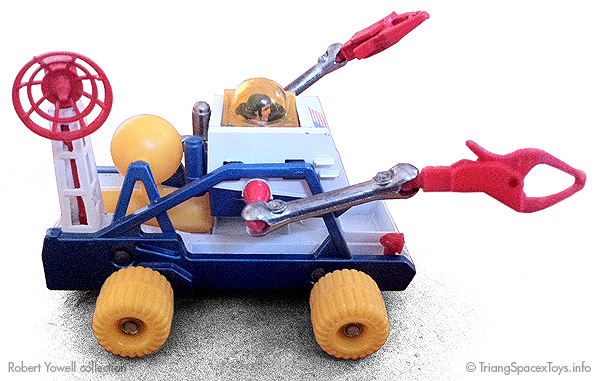
Wheeling across Mars
As a final note, an evolution of Markow's shock-absorbing spiral spokes eventually did make it to an extra-terrestrial surface, when in January 2004 the two Mars Rovers Spirit and Opportunity landed on the Red Planet. They move(d) about on the wheels shown below.
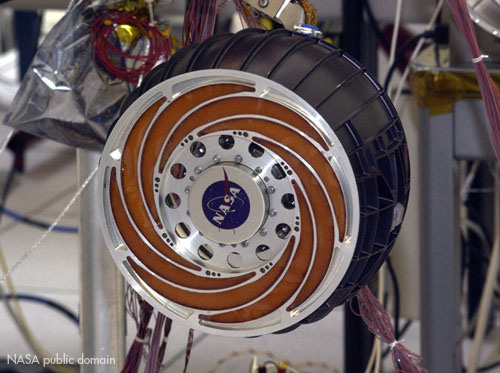
External links open in new pages. Just close them to get back here.
1: See David Portree's entry about these wheels on his incomparable Beyond Apollo blog (moved to Wired since). back to text
2: Amazingly this prototype vehicle survives to this day. Paul Woods discovered it's hanging from the ceiling at an aviation museum. (And as he shows in his blog post, the vehicle was also used in Project Sword comic strips.) back to text
3: A full exposé on the Bond Moon Buggy can be read on the 007 Magazine site. back to text
*: The "strange menagerie" mentioned at the end of the body text in the Man and Space book can be seen in an article in Life magazine (opens in new window). back to text